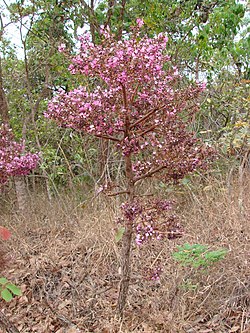| Andira humilis | |
|---|---|
 | |
| Scientific classification | |
| Kingdom: | Plantae |
| Clade: | Tracheophytes |
| Clade: | Angiosperms |
| Clade: | Eudicots |
| Clade: | Rosids |
| Order: | Fabales |
| Family: | Fabaceae |
| Subfamily: | Faboideae |
| Genus: | Andira |
| Species: | A. humilis |
| Binomial name | |
| Andira humilis | |
| Synonyms [1] | |
List
| |

Andira humilis is a species of tree native to Brazil. [2] [3]